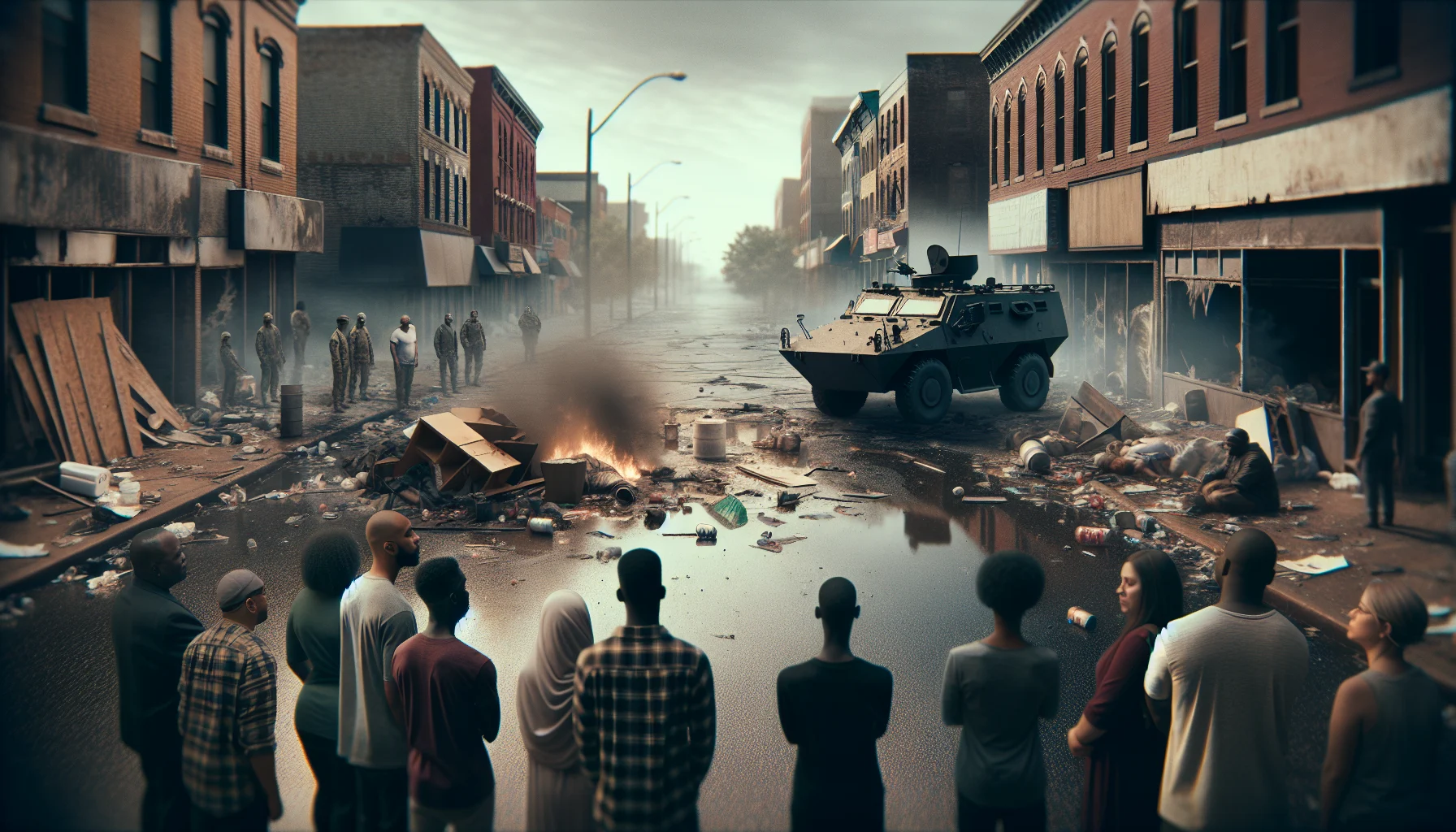
1992 Los Angeles Riots
by: The Calamity Calendar Team
April 29, 1992
The Spark That Ignited the Flames
On an otherwise ordinary late afternoon in Los Angeles, April 29, 1992, the verdict was broadcasted: not guilty. The courtroom was in Simi Valley, a place not unfamiliar with law enforcement and their supporters, and miles away from the heart of the city. This verdict was for four LAPD officers whose actions had already been judged by the court of public opinion, etched into collective memory by a grainy home video showing the relentless, harrowing beating of a Black motorist named Rodney King. The footage, as vivid as it was jarring, had circulated widely, compelling people to bear witness to a brutality that spoke volumes of systemic failures and racial injustices in America.
The acquittal lit a tinderbox of long-standing tensions within the city—histories of systemic racism, economic disenfranchisement, and strained police-community relationships. It was as if all the frustrations, whispered and shouted, finally merged into a single primal scream that could not be ignored.
The Build-Up
To understand the eruption, one has to walk the streets of 1992 Los Angeles—a city of kaleidoscopic diversity but fractured by invisible boundaries. Communities of color, particularly African Americans and Korean Americans, lived alongside tension on simmer, often sparked by misunderstandings and sheer survival hustles. Economically, Southern Los Angeles was struggling. High unemployment, a widening income gap, and deteriorating neighborhoods only added fuel to the smoldering embers.
The King incident was not an isolated event. It read like a chapter in an old, dog-eared book detailing excessive policing, racial profiling, and an overwhelming sense of being unseen and unheard. And so, when those officers walked free on that hot April day, it felt like betrayal upon betrayal.
A City in Flames
That evening, protests burgeoned into chaos. What began as gatherings simmered rapidly into fierce, unrelenting anger. By nightfall, much of South Central Los Angeles was engulfed in scenes of fire and fury. The initial sparks of violence spread with a contagious volatility. Storefronts—symbols of dreams and enterprise—were consumed by flames. The air was thick with smoke and desperation.
April 30 brought more of the same; fires scorched the horizon, and sirens wailed against a cacophony of shouts and helicopters buzzing overhead. The California National Guard was called in, yet it was as if the city had slipped through the fingers of order. No street was spared, no community untouched by the pervasive upheaval. Residents, some angry, some merely desperate, took to the streets. And all the while, Rodney King's heartfelt plea echoed through the chaos: "Can we all get along?"
Thanks for subscribing!
Restoring Order
By May 1, the clamor reached the ears of President George H.W. Bush, who, with a somber gravity, addressed the nation from the Oval Office. His words condemned the "random terror and lawlessness" but underscored a commitment to restoring order. Federal troops arrived, a visible and potent display of force intended to quell the disorder and reclaim control of a city hanging in the balance.
The coordinated efforts of local police, the National Guard, and federal forces worked to curb the violence, though tensions remained taut as a tightrope. As the weekend stretched on into Monday, a semblance of order returned. The fires burned themselves out, leaving charred reminders of a city’s anguish.
Picking Up the Pieces
After the flames had died down and the smoke cleared, Los Angeles was left to reckon with the wreckage. The statistics speak to the tragedy: 63 lives lost, thousands injured, more than 1,100 buildings damaged or destroyed, and over 12,000 arrests made. Property damage estimates soared beyond $1 billion. The devastation inflicted upon businesses was immense, leaving a particular scar on Korean American communities whose livelihoods had been shattered overnight.
Yet, amid the debris and despair, there were seeds of dialogue and change. Federal and state aid flowed in to help rebuild the ravaged city, and in the aftermath, meaningful conversations about race relations and police practices emerged. The LAPD, under immense scrutiny, embarked on a crucial journey of reform, implementing changes in leadership and policies aimed at swallowing its past to regurgitate a fairer, more transparent force.
A Lasting Legacy
Decades have passed, but the echoes of the 1992 Los Angeles Riots still reverberate in the present. The event has become a focal point for discussions about racial injustice and systemic reform, often referenced as a stark cautionary tale of what happens when the flames of inequity and mistrust are fanned unchecked.
Historians, sociologists, and communities continue to study these days of upheaval, unfolding insights and lessons about a society always in the process of coming to terms with the same old questions: How do we heal? How do we build trust? And how do we ensure that justice is not a privilege but a given right, shared by all? The Los Angeles Riots may be history, but the need for their lessons is very much alive.
Stay in the Loop!
Become a Calamity Insider and get exclusive Calamity Calendar updates delivered straight to your inbox.
Thanks! You're now subscribed.